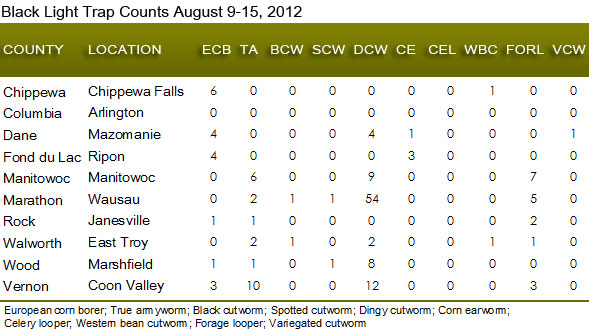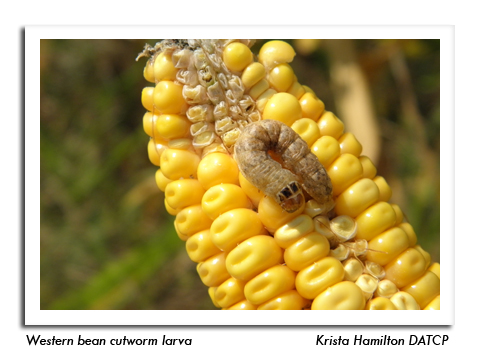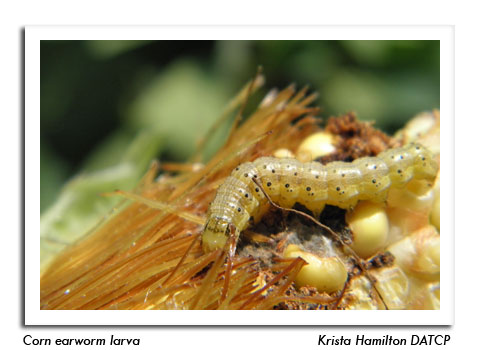
 |
|
|
Corn
Volume 57 Number 18 Date 08/16/2012 CORN ROOTWORM - The statewide beetle survey is incomplete, but populations thus far are lower than last year in the south-central, southwestern and central districts and higher in the southeastern and northern areas. In the central districts, averages range from 0.5-0.6 per plant, which is comparable to 0.5-0.8 per plant last year. Counts in the north are generally low at 0.3-0.5 per plant but represent as increase from 2011 levels. Economic counts of 0.75 or more beetle per plant have been found in 45 of 180 (25%) fields surveyed, compared to 27% last season. Final survey results will be published in the August 29 issue of the bulletin. WESTERN BEAN CUTWORM - Damage to corn was noted this week in Buffalo, Chippewa and Trempealeau counties, where an estimated 2-10% of ear tips were infested with late-instar larvae. Most of the population is advanced and should enter the pre-pupal stage by early September. A few late moths are still appearing in traps but the flight has basically ended. CORN EARWORM - A major migration of corn earworm moths is in progress. Counts at the Ripon trapping sites increased to 271 and 503 moths per trap last week, while counts at four of five Dane County sites escalated to 81-250 per trap this week. Larvae of various maturities can be found statewide. Examination of field corn in Buffalo, Chippewa, Eau Claire, Jackson and Trempealeau counties found minor infestations of 2-6%. Most earworms were in the intermediate to late instars, although a few were very small. Sweet corn growers should continue to monitor fields for egg laying as long as moth activity persists and green silks are present. Counts this week were: Aztalan 130, Chippewa Falls 10, Columbus 81, Coon Valley 38, Janesville 10, Manitowoc 0, Marshfield 2, Oregon 36, Ripona 146, Riponb 206, Sun Prairie 130, Wausau 0 and Westport 250. --Krista Hamilton, DATCP Entomologist 


|
|
|